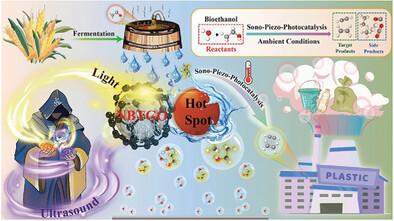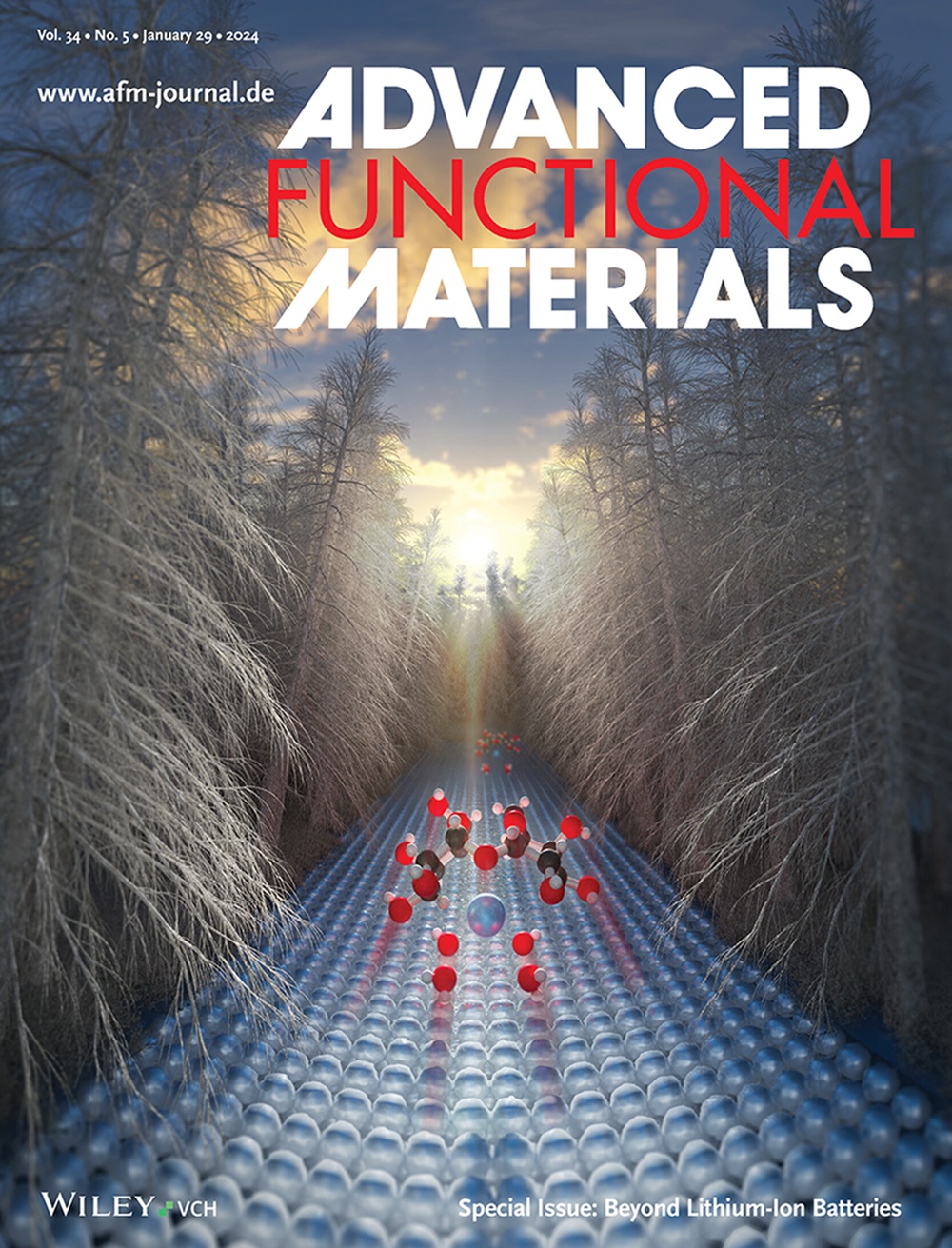Sono-Piezo-Photosynthesis of Ethylene and Acetylene from Bioethanol under Ambient Conditions
IF 18.5
1区 材料科学
Q1 CHEMISTRY, MULTIDISCIPLINARY
引用次数: 0
Abstract
The catalytic conversion of bioethanol to ethylene (C2H4) and acetylene (C2H2) offers a transformative approach to sustainable production of two industrial cornerstones for organic compound and polymer syntheses, thereby offering significant economic and environmental advantages. In contrast, current methods for the synthesis of these C2 hydrocarbons rely on energy- and carbon-intensive processes that require high temperatures and pressures. The present work addresses these limitations with a novel, low-energy, bioethanol-conversion strategy operating at room temperature and ambient pressure using sono-piezo-photocatalysts. A novel heterostructure of graphene oxide fragments (GO) and sodium bismuth titanate (NBT) within a core-shell microstructure achieved outstanding C2H4 and C2H2 production rates of 134.1 and 55.5 µmol/g/h, respectively. The conversion mechanism is driven by (1) bubble collapse during ultrasound irradiation, generating localized high temperatures (≈4000 K) and pressures (≈100 MPa), and (2) piezo-photocatalytic tuning of GO/NBT by enhanced charge separation and transfer. DFT simulations revealed detailed sono-piezo-photocatalytic conversion pathways, showing significant reductions in energy barriers for C2H4 (22.0 kcal mol−1) and C2H2 (48.0 kcal mol−1) formation. These findings emphasize the critical role of the catalyst in cleaving both C─H and C─O bonds effectively, leading to the desired product formation.

求助全文
约1分钟内获得全文
求助全文
来源期刊

Advanced Functional Materials
工程技术-材料科学:综合
CiteScore
29.50
自引率
4.20%
发文量
2086
审稿时长
2.1 months
期刊介绍:
Firmly established as a top-tier materials science journal, Advanced Functional Materials reports breakthrough research in all aspects of materials science, including nanotechnology, chemistry, physics, and biology every week.
Advanced Functional Materials is known for its rapid and fair peer review, quality content, and high impact, making it the first choice of the international materials science community.
 求助内容:
求助内容: 应助结果提醒方式:
应助结果提醒方式:


